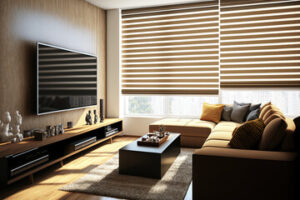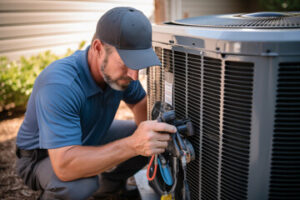Watching climbers at the Olympics or on TV can make the sport look terrifying. The speed, strength and dexterity climbing requires seems impossible for a weekend athlete to match.

Alta Climbing involves using your hands and feet to move up a rock face, often with a rope in case you fall. Different kinds of climbing include trad (traditional), sport, bouldering, hill walking and mountaineering.
Climbing is a broad activity which can involve ascending a large mountain or just a small cliff. It can be done with tons of specialized gear or no equipment at all. There are several different specializing branches of climbing and mountaineering: trad, sport, bouldering, ice climbing, dry-tooling, and mountaineering (along with hill walking, scrambling and other forms of hiking).
Rope climbing is the most common type of climbing, whether it’s on natural rock or indoor wall. During this form of climbing, the climber is tied to a rope that’s controlled by another person for safety. The person controlling the rope is called a belayer.
When climbing, a climber uses their hands and feet to ascend the cliff or wall. A key to climbing is to place the fingers and hands on pronounced edges of the rock, such as a crack or a lip or a bulge. These places of contact are known as “holds.” The more holds you can place your fingers and hands on, the higher you can climb.
Another key element to climbing is to breathe properly. A good breathing pattern helps to keep your body relaxed and focused, which will help you make better decisions. It’s also helpful to learn the names of the various hand and foot holds, and to get familiar with how they feel. This will make it easier to choose the best holds for each situation.
It’s also important to engage your core (the muscles in your midsection) during climbing. New climbers have a tendency to let their hips droop down and hang on their arms, but engaging the core can help you stay balanced. It can also help you stay conscious of your balance and the movement of your body through the air, so you don’t dangle from your arms for too long.
While climbing, it’s essential to know your limits and follow the safety guidelines that go with each type of climbing. You should also always be mindful of your surroundings and other people in the area. In addition, be sure to practice proper belay technique before climbing with other people.
Equipment
Climbers need to have a set of basic equipment that will vary slightly depending on the type of climbing. Generally, a rock climber will need climbing shoes, a harness, chalk bag and possibly a crash pad and spotters in the case of bouldering. Those moving to lead climbing or wanting to do indoor climbs will need a rope (usually 25-35m) and a belay device.
A harness is a key piece of equipment, particularly for beginners, as it can be used to hold a person in the event of a fall and prevent serious injury. Harnesses are available in a range of sizes and prices, but for most climbers starting out the specific features don’t matter too much as long as the harness fits well.
Many indoor climbing walls have a series of fixed protection points such as bolts, which climbers can clip into with quickdraws, special snap-gate carabiners. If you’re going to take your climbing further than that, or want to try trad climbing or free soloing, you’ll need to get a rack of your own.
This will include a number of quickdraws, some screwgate carabiners and perhaps some hex keys or nuts. You’ll also need a belay device, which is a mechanical brake that will help catch the climber if they fall. These are available in a range of different options and will have specifications such as maximum load capacity, weight and speed.
Finally, you’ll need a pair of locking carabiners for belaying. These have a special locking mechanism that makes them safer than regular carabiners. These are often called belay keys and can be purchased from climbing shops or online.
Other climbing types include ice climbing, which involves ascending inclined ice formations using techniques and equipment similar to rock climbing. Mountaineering, which involves a wide variety of climbing styles and terrain including rock, snow, ice and glaciers, requires specialist equipment such as mountaineering boots and warm clothing.
Big wall climbing involves ascending long multi-pitch routes that require the climbers to live on the route using portaledges and hauling equipment. Indoor climbing can also be considered mountaineering, though there are dedicated indoor facilities that specialise in this activity.
Techniques
Climbers use a variety of techniques to move up the wall. Beginners often hear about climbing square—keeping the body over the hips and pushing with legs more than pulling arms—but it isn’t always possible or even practical to do so on steep walls. Taking the time to learn how to move with the rock will help climbers stay safe and feel more confident on challenging terrain.
Getting the most out of every movement is essential to a good climb. Climbing dynamically can be more strenuous for the fingers, but it can also make a climb much easier. Harnessing momentum requires a significant amount of strength, which can feel challenging for new climbers who are used to moving statically.
Stemming is a powerful technique that uses counter pressure to prevent the climber from swinging away from the rock. Beginners should practice stemming on juggy climbs to develop the skills necessary to perform this type of rest. Flagging—sticking a leg out to the side of the body as a counterweight—is another great way to prevent barn-dooring, especially when climbing a juggy route that has holds on both sides of the wall. Flagging is ideal for long reaches that would be strenuous to reach statically.
Another useful technique is the kneebar, which allows the climber to bridge an area of the rock with one leg. The climber places a foot on the hold, locks off with that foot and then braces the opposite knee against the rock for support. A solid kneebar is an excellent hand-off for resting, and climbers can hang off of this position for minutes. The kneebar is especially helpful on overhanging sections, where a lunge would pop the feet off the wall.
Many beginner climbers will be guided up the first few pitches by a more experienced leader. In this scenario, the leader trails a rope from above through a belay device and then clips into anchors—pre-placed bolts or anchoring devices she puts in cracks as she climbs—along the route to create a safety net below. The second climber, called the belayer, follows the leader up the cliff and lowers her down after she has reached the top and clipped the safety rope into the belay device.
Safety
Climbing can be a dangerous sport, though it is generally safe when performed correctly. There are still a lot of accidents involving climbers that occur every year, and some of them have serious consequences. Many of these accidents are attributed to human error, and only rarely to bad luck. Regardless of what type of climbing you are doing, there are certain safety measures that should always be taken into account.
Be sure to check your equipment before putting it on, and make sure that you have everything that you need for the type of climb you are going on. This includes both your climbing gear and your belay gear. Be sure that your harness is secure, and that it is doubled back. It is also important to check that your belay rope is properly secured, and that it is not overly tight or loose. Finally, be sure that your shoes are appropriate for the climbing route and conditions. Sandals, flip flops, and dress shoes are not ideal for climbing, as they can easily slip.
When you are climbing, be aware of the people around you. Indoor climbing gyms can often get crowded, and you should give other climbers space so that they don’t fall on top of you. When bouldering, it is especially important to keep a safe distance from other climbers.
Outdoor climbing is often done in fragile wilderness areas, and it is important to respect the environment and leave no trace behind. Be sure to pack out trash, erase tick marks, stay on marked trails, and avoid trespassing or camping in prohibited areas.
Another important aspect of safety is communication. Both climbers and belayers should clearly communicate their intentions to one another. If the climber is indicating that they need the rope to be taken snug, this should be said loudly and clearly so that the belayer understands what is required of them. Likewise, if the climber wants to stop lowering, this should be clearly stated as well.
It is also important to listen to the advice of experienced climbers. They can offer valuable knowledge that can help you to become a better climber, and can help you to avoid some of the common mistakes that beginners often make.








